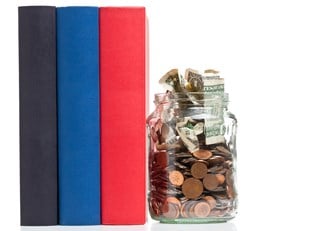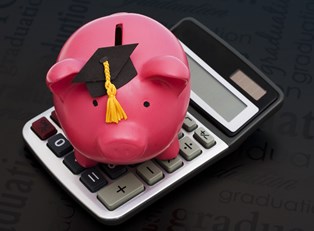Student Loan consolidation is a method for combining two or more qualified loans into a new loan with a single payment. It can provide lower monthly payout than that of two or more individual loan payments. A wide range of Department of Education loans are eligible for the loan consolidation program, however, private loans are not eligible for federal loan consolidation.
A Student Direct Consolidation Loan is a single loan that replaces two or more pre-existing student loans. Nearly every federal student loan is eligible for a consolidation loan. Repayment of a Direct Consolidation Loan begins 60 days after the loan disbursement or sooner. The loan service agent sets the payment schedules. The repayment term ranges from a minimum of 10 years to a maximum of 30 years. The borrower can select the term of payment with the longer-term repayment plans tied to larger loan amounts, or hardships.
To initiate a loan consolidation one must have two or more qualified loans, which may not be in default. If a loan is in default, it is not eligible for consolidation. The borrower must first arrange with the lender for repayment. Defaulted loans can become eligible for consolidation only after a successful arrangement with the lender for repayment.
A Direct Consolidation Loan has a fixed interest rate for the life of the loan that may be preferable to a variable rate loan. The Government determines the fixed from weighted averages of the interest rates on the loans included in the consolidation, and then rounded up to the nearest one-eighth of 1%. The lender thereafter sets the rounded amount into a contract term. There is no statutory or federal rule cap on the interest rate of a Direct Consolidation Loan. Interest on student loans may be deductible from income taxes; there are provisions for itemizing up to $2,500.
The term of payment can range from 10-30 years. One must consider the added interest paid as the term lengthens and find the right balance between the monthly payment rate and the term of payment. Another consideration is the loss of benefits from the original loans. The act of consolidation wipes out the initial loans; they no longer exist and with them go the lender or loan benefits such as forgiveness, forbearance, deferrals, and subsidy.
There are three types of payment plans or payment formulas. First, The Income-Based Repayment Plan is for hardship applicants, corresponds to income and family size, and has up to 25-year term. Second, the Pay As You Earn Repayment Plan has a 20-year term, set below the other plans and adjusted to income and dependents. Third, the Income-Contingent Repayment Plan keyed to a goal of a 20% portion of disposable income, maximum 20 year term, is usually the lowest monthly payments.
There are two ways to apply for Direct Consolidation Loans, the Direct Consolidation Loan Website and the StudentLoans.gov website. The Direct Consolidation site is for people with defaulted loans collected by the Department of Education. The StudentLoans.gov website is for borrowers with no defaulted loans or having defaulted loans with collection not assigned to The Department Of Education. In the process of approval, borrowers must continue to pay until discharge of the existing loans.




